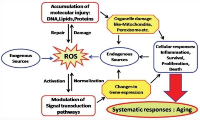Diabetes-Induced Cortical Neural Damage in Male Wistar Rats: Ameliorative Role of a Flavonoid
Keywords:
cortical neural damage, diabetes mellitus, diabetic neuropathy, polyphenols, antioxidant, oxidative stressAbstract
Diabetes mellitus (DM) is a multifactorial metabolic disease characterized by persistent hyperglycaemia associated with numerous toxic outcomes including neuropathy amongst others. Naringenin (NG) is a flavonoid with diverse pharmacological spectrum. This study evaluated the ameliorative role of naringenin against streptozotocin–induced diabetic cortical neural damage in rats. Post induction of diabetes, 30 Wistar rats were randomly allotted to five groups of six each and orally treated daily thus: Group-1 (vehicle control) received 0.1 mol/L citrate buffer, group 2 (negative control), groups 3-5 received 25, 50 and 100 mg/kg body weight of NG respectively for 35 days during which their fasting blood glucose (FBG) levels were measured. On the 37th day, all animals were sacrificed under diethyl ether anaesthesia, cranial vaults were opened and cerebral cortex eviscerated and suspended in liquid nitrogen for 5 min until all particles were frozen. Samples were stored in freezer at -80 0C for tissue enzymatic studies. At 50 and 100 mg/kg NG, significant (P<0.05) dose-dependent reduction in FBG as well as elevated serum insulin levels at 100 mg/kg NG only were recorded. Increased activities superoxide dismutase, catalase and glutathione but decreases in malondialdehyde levels were recorded at 50 and 100 mg/kg NG compared to control. Findings reveal that NG strengthens the intrinsic antioxidant defence system against streptozotocin-induced diabetic cortical neural damage in lower animals and thus could be exploited as an adjuvant in the management of diabetes and neuropathies especially after validation via clinical trials.
Downloads
References
Aebi, H. (1984). Catalase in vitro. Methods Enzymol. 105:121–126. https://doi.org/10.1016/S0076-6879(84)05016-3.
Akah, P.A., Okoli, C.O., and Nwafor, S.V. (2002). Phytotherapy in the management of diabetes mellitus. J. Natur. Rem. 2(1): 1 – 10.
Al-Rejaie, S.S., Aleisa, A.M., Abuohashish, H.M, Parmar, M.Y., Ola, M.S., Al-Hosaini, A.A., and Ahmed M.M. (2015). Naringenin neutralizes oxidative stress and nerve growth factor discrepancy in experimental diabetic neuropathy. Neurol. Res. 37(10):924-933.
Arcaro, G., Cretti, A., Balzano, S., Lechi, A., Muggeo, M., and Bonora, E. (2002). Insulin causes endothelial dysfunction in humans: sites and mechanisms. Circulation, 105(5): 576–82.
Bella, D.L., Hirschberger, L.L., Hosokawa, Y., and Stipanuk, M.H. (1999). Mechanisms involved in the regulation of key enzymes of cysteine metabolism in rat liver in vivo. Am. J. Physiol. Endocrinol. Metabol. 276(2-1):326 –35.
Brownlee, M. (2005). The pathobiology of diabetic complications: a unifying mechanism. Diabetes, 54(6): 1615 –1625.
Colado, M.I., O’Shea, E., Granados, R., Misra, A., Murray, T.K., and Green, A.R. (1997). A study to correlate rotenone induced biochemical changes and cerebral damage in brain areas with neuromuscular coordination in rats. Br. J. Pharmacol. 121(4): 827 – 833.
Decker, E.A. (1995). The role of phenolics, conjugated linoleic acid, carnosine and pyrrolquinolinequinone as non-essential dietary antioxidants. Nutr. Rev. 53:49.
Fang, Y.Z., You, Y.G., and Chen, G.M. (1998). Clinical observation on health care effects of tea polyphenols compounds (Lu-Duo-Wei): prevention of coronary heart disease, hypertension and Type 2 diabetes. Paper presented at the symposium on tea and anticarcinogenesis, Shanghai, p.38.
Fang, Y.Z. (2002). Free radicals and nutrition. In: Theory and Application of Free Radical Biology. Y.Z. Fang, and R.L. Zheng, editors. Scientific Press, Beijing. p.647.
Figueroa-Romero, C., Sadidi, M., and Feldman, E.L. (2008). Mechanisms of disease: the oxidative stress theory of diabetic neuropathy. Rev. Endocr. Metab. Disord. 9: 301 – 314.
Guelzim, N., Jean-Francois, H., Mathe, V., Quignard-Boulange, A., Martin, P.G., and Tomie, D. (2011). Consequences of PPARα invalidation on glutathione synthesis: interactions with dietary fatty acids. PPAR Res. https://doi.org.10.1155/2011/256186.
Herceg, Z., and Wang, Z.Q. (2001). Functions of poly (ADP-ribose) polymerase (PARP) in DNA repair, genomic integrity and cell death. Mutat. Res. 422(1-2):97 – 110.
Kersten, S., Mandard, S., and Escher, P. (2001). The peroxisome proliferator activated receptor (α) regulates amino acid metabolism. FASBEB J. 15(11): 1971–1978.
Kono, Y. (1978). Generation of superoxide radical during autoxidation of hydroxylamine and an assay for superoxide dismutase. Arch. Biochem. Biophys. 186(1): 189– 195.
Lowry, O.H., Rosebrough, N.J., Farr, A.L., and Randall, R.J. (1951). Protein measurement with the folin phenol reagent. J Biol Chem. 193:265-275.
Miral, D., Pawel, J., Mustafa, B., and Henry, R. (2002). Free radicalsinduced damage to DNA: mechanisms and measurement. Free radical Biol. Med. 32(11): 1102–1115.
Mosa, K.A., El-Naggae, M., and Hani, H. (2018). Copper nanoparticles induced genotoxicity, oxidative stress, and changes in superoxide dismutase (SOD) gene expression in cucumber (Cucumis sativus) plants. Front Plant Sci. 9:872.
Murriach, M., Bosch-Morell, F., Alexander, G., Blomhoff, R., Barcia, J., and Arnal, E. (2006). Lutein effect on retina and hippocampus of diabetic mice. Free Radical Biol. Med. 41:979 – 984.
National Institute of Health, (1996). Guide for the care and use of laboratory animals. Publication No: 86-23. NIH, Maryland.
Ola, M.S., Aleisa, A.M., Al-Rejaie, S.S., Abuohashish, H.M, Parmar, M.Y., and Alhomida, A.S. (2014). Flavonoid, morin inhibits oxidative stress, inflammation and enhances neurotrophic support in the brain of streptozotocin-induced diabetic rats. Neurol. Sci. 35:1003–1008.
Rask-Madsen, C., and King, G.L. (2013). Vascular complications of diabetes: mechanisms of injury and protective factors. Cell Metabol. 17(1): 20 – 33.
Schnedl, W.J., Ferber, S., Johnson, J.H., and Newgard, C.B. (1994). STZ transport and cytotoxicity specific enhancement in GLUT2-expressing cells. Diabetes, 43(11):1326-1333.
Sedlak, J., andLindsay, R.H. (1968). Estimation of total, protein-bound, and non-protein sulfhydryl groups in tissue with Ellman’s reagent. Anal Biochem. 25(1): 192–205.
Tuzcu, M., and Baydas, G. (2006). Effect of melatonin and vitamin E on diabetesinduced learning and memory impairment in rats. Eur. J. Pharmacol. 537:106-110.
Wang, Z., and Glenchmann, H. (1998). GLUT2 in pancreatic islets: crucial target molecule in diabetes induced with mutiple low doses of streptozotocin in mice. Diabetes, 47(1):50-56.
World Health Organization, (2014). Global Health Observatory (GHO) Data: World health statistics 2014. WHO, Geneva. World Health Organization, (2015). Technical Report: Noncommunicable diseases progress monitor. WHO, Geneva.
Zherebitskaya, E., Akude, E., Smith, D.R., and Fernyhough, P. (2009). Development of selective axonopathy in adult sensory neurons isolated from diabetic rats: role of glucose-induced oxidative stress. Diabetes, 58: 1356 –1364

Downloads
Published
Issue
Section
License

This work is licensed under a Creative Commons Attribution-NonCommercial-ShareAlike 4.0 International License.







